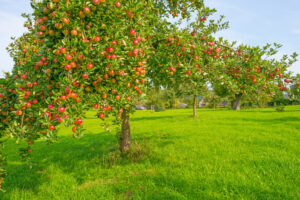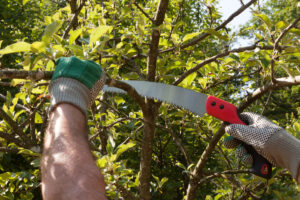
Introduction
When growing an orchard on the homestead, it is important to consider which types of fruit trees are best suited for the climate and soil conditions. Planting a variety of fruit trees in one space helps to maximize the amount of fruits that can be harvested from a given area while also helping to promote pollination for larger harvests. It is also beneficial to plant trees that bear fruit at different times of the year in order to have a regular supply of fresh produce.
What Trees to Plant
When choosing which types of fruit trees to grow, it is important to factor in both taste preferences and growing conditions. If you hate cherries, though I’d have to ask why, it’s probably best not to plant cherry trees! Who doesn’t like cherries?
Even in an urban yard, many fruit tree varieties can do quite well. Dwarf and semi-dwarf varieties can be a good choice for limited spaces because they require less room and can still provide plenty of fruit over time. You might also consider trees grafted with multiple types of fruit if you have limited space. Just be extra careful to pay attention to pruning or one variety may take over the tree.
Also, consider the amount of sunlight available and how it will affect various tree varieties. Most fruit trees require 6-8 hours of sunlight to bear well but I wouldn’t let that stop me from planting fruit trees if your yard does not provide that. The crop may be decreased but the trees will still produce at the lower end of that, especially if it’s dappled shade.
Some fruits such as blueberries and strawberries do fine with more shade. Mulberries seem to do well for me as well, but don’t plant those too close to the house or the birds will make a mess of your car, house, sidewalk or patio!
Most fruit trees require cross-pollination to produce a good crop, so it is best to plant varieties that bloom at the same time and are known pollinators for each other. To ensure adequate pollination, it is important to space them close enough together for bees and other insects to move between them easily to ensure pollination occurs.

Pruning and Fertilization
In addition to choosing the right types of fruit trees for the homestead, consideration must also be given to other aspects such as irrigation, pruning and fertility management. Regular watering can help ensure that the trees produce a healthy yield each season while proper fertilization helps maintain soil health and boosts plant growth. Pruning and pest control are also important tasks to maintain healthy trees and fruit yields. Your aim in pruning is an open shape that air and sunlight can reach. I pruned my trees this year and I was brutal! They are doing great! I think they are happier with the increased airflow and sunlight. I am purposefully keeping my trees pruned back so I won’t need ladders to harvest.
Pest seem to love fruit trees! I try to stay as close to organic as I can which sometimes means hand-picking the Japanese Beatles trying to eat my fruit tree leaves. Just pop them in a cup of soapy water and drown them! I use diatomaceous earth, insecticidal soap, BT, and neem oil. If things get really bad I will resort to permethrin. I’m careful to spay in the evenings as it’s bad for pollinators, especially bees. Another possibility I have not tried is natural predatory insects. You can actually buy these on Amazon! Who knew?
Maintenance
Finally, it is important to think about how the orchard will be maintained over time. Consider investing in tools such as a ladder or harvesting pole for easy access to the upper branches of taller trees. Regular maintenance throughout the year is essential for keeping an orchard healthy and productive. This includes tasks such as weeding, fertilization, pruning and pest control. In addition, keeping a regular record of planting dates and harvest times can help to ensure that the orchard is managed in the most efficient way possible.
Harvest and Preservation
For added convenience, you may want to consider investing in a fruit-picking tool such as an apple picker. This device can make it much easier to harvest fruit from the upper branches of taller trees. Additionally, it is important to think about how you will store your fruit after harvest. An orchard can easily become a haven for pests such as rodents and birds if not properly managed. Investing in proper storage containers and keeping fruit off the ground can help to prevent this issue. Decide what you are going to do with your abundance. Will you can and preserve it? Sell in the local farmers market, perhaps? Or perhaps just gift friends and family! With these considerations in mind, you should be well on your way to having a successful orchard that yields delicious fruits for years to come!
Conclusion
With careful planning and maintenance, an orchard can provide fresh fruit for years to come! It is also a great way to introduce younger generations to the joys of growing their own food and can help foster a connection with nature. By investing in fruit trees, you can have an orchard that is both productive and beautiful for years to come.
Endless possibilities await in the homestead orchard! From apples and oranges to peaches and pears, you can create an orchard full of delicious fruits for the whole family to enjoy. With careful planning and maintenance, your orchard can be a source of nutrition and delight for many years to come!
For more on homesteading check here.
If you want more specific information on how to grow blueberries check here.
For specific information on how to grow apple trees check here.
Resources:
https://duckduckgo.com/?q=growing+fruit+trees+in+small+yards+state+extention&atb=v375-1&t=chromentp&ia=web
